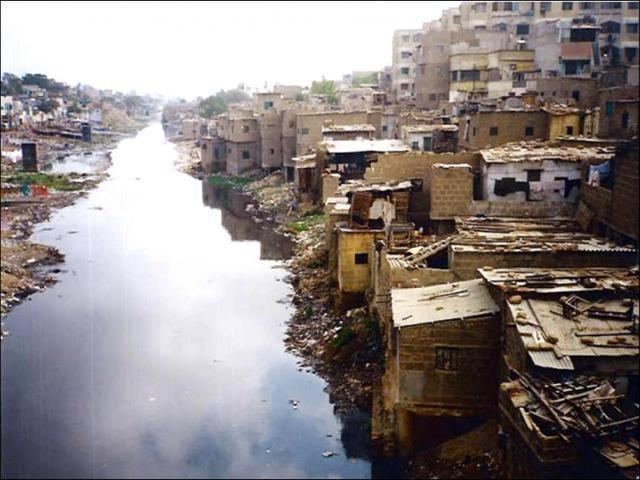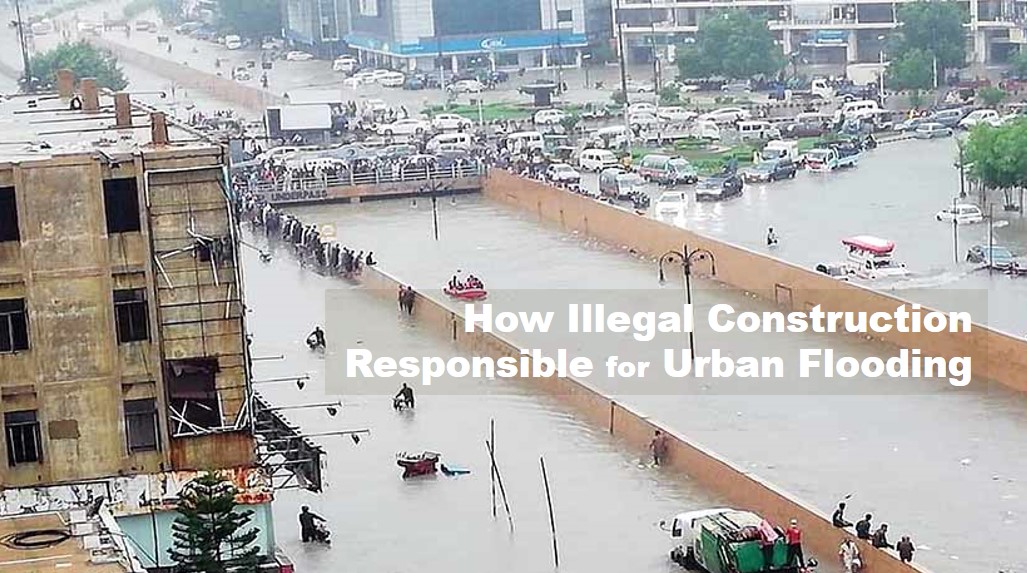As far as Karachi urban development is concerned, one of the sad realities is that decades of haphazard and unplanned growth, and violation of civic codes have created nothing but unsustainable infrastructures in the megacity where life is getting difficult and living unsafe with each passing day. One of the recent examples is the case of urban flooding. For administrative authorities, it is easy to blame “more than average rainfall” and climate change for any calamity or environmental collapse, but urban flooding is caused not due to extreme weather but unsustainable and unplanned development in the metropolitan.
Generally urban flooding causes due to the lack of drainage in a city. But in Karachi, frenzied and unregulated construction, informal settlements, chocked drains and municipal waste mismanagement are major reasons for this havoc. And, the ecocatastrophe in the shape of rain-flood has drowned and exposed the megacity’ developmental vulnerabilities.
Karachi Urban Flood 2022
This year in the second spell of monsoon rains, starting on July 24, the city received 348 millimeters rainfall, which is more than an entire summer’s worth of rain in a single day. As per the Provincial Disaster Management Authority Sindh, 45 people lost their lives to this year’s monsoon in Karachi in July alone. Mainly due to the electrocution and drowning in manholes overflown with chocked drains.

Karachi’s stormwater drains, locally called nullahs, flow into two seasonal rivers, the Lyari and Malir, which begin in the foothills of Kirthar range and run parallel to each other. According to the Karachi Water and Sewerage Board the city has 64 big nullahs which carry the water of their catchment areas. Besides, there are other thousands of smaller nullahs that drain into them. This entire network, from smaller nullahs to big nullahs and then the two rivers, comes together and finally falls into the Arabian sea.
Encroached Drains
With a booming population, unchecked migration and without any sustainable social housing policy, people started to create informal housing settlements or katchi abadis, along the drains. Their constructions obstructed the flow of water in drains, causing overflow time by time. After the 2020 flood in Karachi, resulted in 41 deaths, the Sindh government demolished hundreds of houses along Gujjar and Orangi nullah, as a part of its anti-encroachment drive to clear up the waterways. These houses were leased by the Karachi Development Authority, however even after removing encroachments along Gujjar and Orangi, the issue persists, and the downtown city flooded again in 2022.
Interestingly, construction on storm water drains wasn’t restricted to just the informal housing settlements. As the Government of Sindh, for its own use, has constructed car parking facilities, offices and a MPA hostel on these drain network and even part of the registry of the Supreme Court of Pakistan is constructed over it.
Sea Reclamation
Not only downtown city, the posh locality of Clifton and specially Defence Housing Authority (DHA) was also flooded with water gushing into houses. The locality remained not commutable and livable for several days. The DHA which had been developed with a sizable amount of sea reclamation didn’t have storm water drain network until 2012. And, when the drains were made, they were dug under the roads rather alongside, too small in size and depth, so unable to carry rain water flow out of the entire locality.

Most of the underpasses were flooded and there was nowhere to pump the flood waters out to. Such was the gravity of situation, the chief minister Murad Ali Shah admitted before reporters.
Solid Waste Mismanagement
The solid waste management system of Karachi has been remained questionable since decades. Due to the lack of separate drainage and sewage systems in the city, both formal and informal settlements started to dispose their sewage into the nullahs – a practice that has continued since the mid-1960s.
For a spatially large city of 3,780 square kilometers, Karachi only has two landfill sites, both located in District West. Which means solid waste without segregation has to be carried for more than 40 kilometers from the eastern and southern parts of the city to reach the sites. Because of this sizable distance, time and costs most of solid waste from major parts of the city never reaches the landfill sites and dumped into drains. This has resulted in most of the nullahs and their tributaries becoming clogged from the accumulated sludge. When it rained, the waste would wash off, but when it didn’t rain for years the sludge would solidify in the nullahs, which would rarely be cleared out by the local government.
The city really is in dire need of proper storm water drain network and modern solid waste management system now. More importantly, it needs climate resilience planning to cater the challenges of the future.
By
Editorial, Infocus


